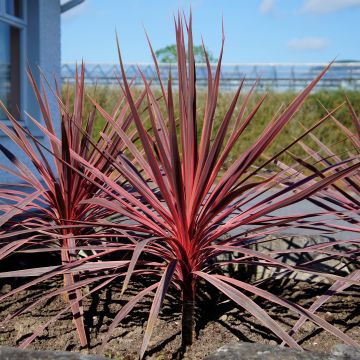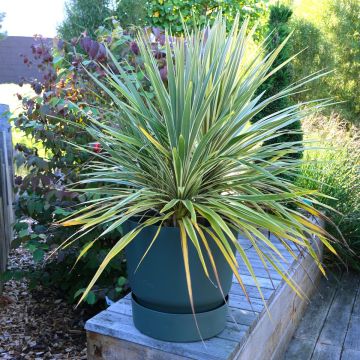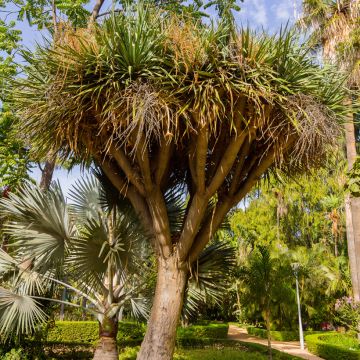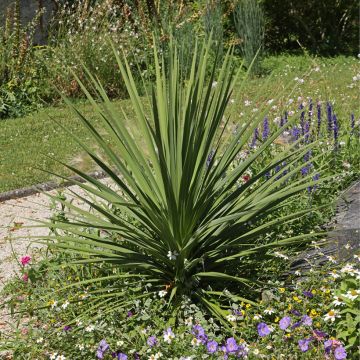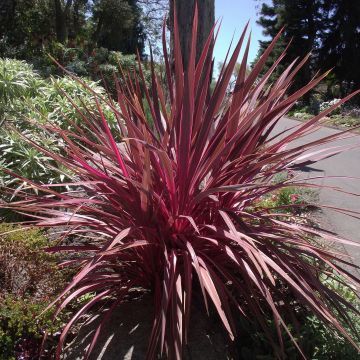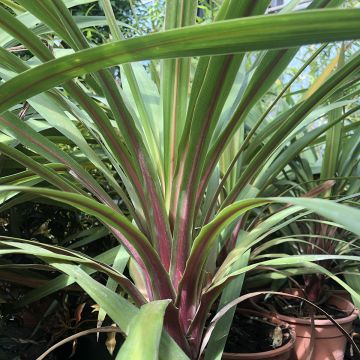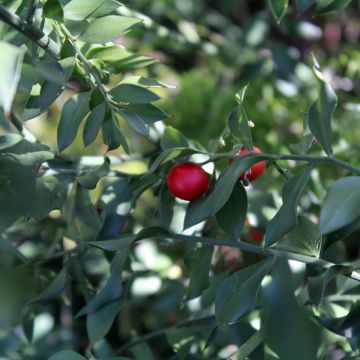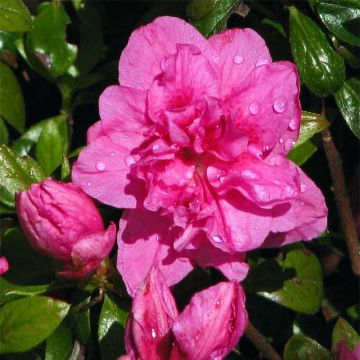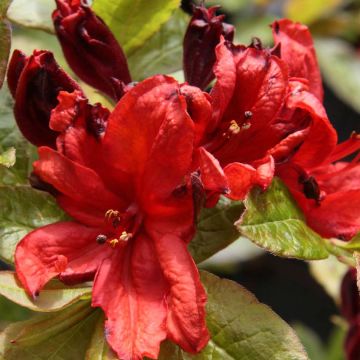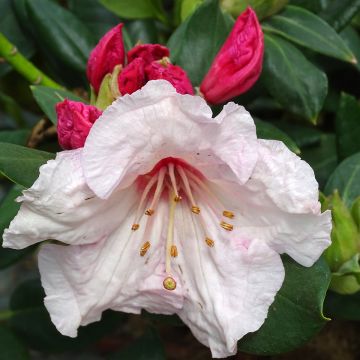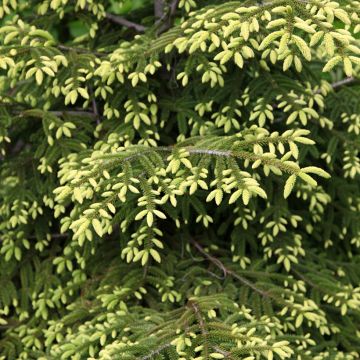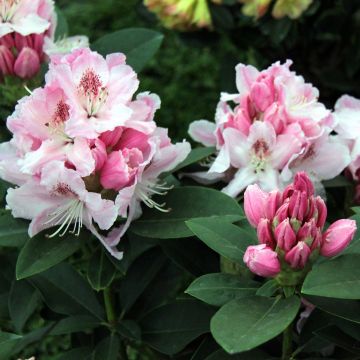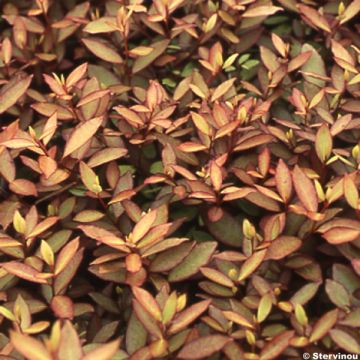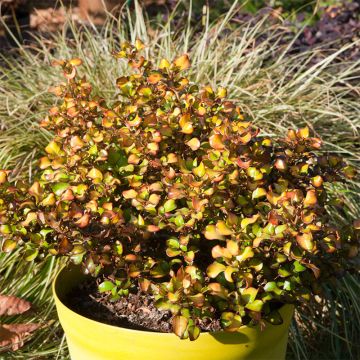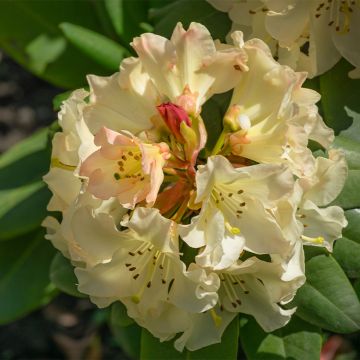

Cordyline australis Magic Star
Cordyline australis Magic Star
Cordyline australis 'Tus020' MAGIC STAR
Cabbage Tree, Torbay Palm, Cabbage Palm
This item cannot be shipped to the selected country
Delivery charge from €5.90
Delivery charge from €5.90
More information
Delivery charge from €5.90
Delivery charge from €5.90
More information
Schedule delivery date,
and select date in basket
This plant carries a 24 months recovery warranty
More information
We guarantee the quality of our plants for a full growing cycle, and will replace at our expense any plant that fails to recover under normal climatic and planting conditions.
From €5.90 for pickup delivery and €6.90 for home delivery
Express home delivery from €8.90.
From €5.90 for pickup delivery and €6.90 for home delivery
Express home delivery from €8.90.
Does this plant fit my garden?
Set up your Plantfit profile →
Description
Cordyline australis Magic Star is a variety rich in colours. It develops green foliage variegated with white-cream that turns pink and then intense red as it gets closer to the centre of the plant. This variety was one of the "shortlisted" plants for the Chelsea Plant of the Year competition in 2023. This magnificent plant, with a very exotic appearance, produces shoots that enhance its architectural look. Its upright and compact habit makes it perfectly suited for pot cultivation.
Cordyline australis is a perennial tree-like plant from the Asparagaceae family endemic to New Zealand. In the wild, this plant reaches a height of 20 m and forms a robust trunk that branches into numerous leafy heads that can reach 1 m long. The cordyline is found in very diverse habitats, such as forest edges, riverbanks, and open areas, especially near marshes.
The Magic Star variety grows slowly, with a compact and upright habit, and maintains a modest size. It offers remarkably colourful foliage. The plant has a rosette habit in its juvenile state (for several years), then it forms a small tree with a single trunk and branches adorned with leafy tufts. This variety reaches a height of 1.80 m and a width of 80 cm at maturity. Its evergreen leaves are long and narrow, sword-shaped, pointed and slightly arched, and measure 40 to 90 cm long and 3 to 7 cm wide at the base. Flowering occurs in summer on mature plants. Each stem can branch out once it has produced a flower stem. The small lavender-coloured, nectar-rich and delicately scented flowers are borne on large dense panicles measuring 60 to 100 cm long. The fruit is a white and round berry measuring 5 to 7 mm in diameter, loved by birds. On mature plants, the pale grey to dark grey bark of the trunk has a corky and fissured appearance and is spongy to the touch.
The Magic Star Cordyline has a standard hardiness for a Cordyline, down to -7°C under good growing conditions, i.e., in a warm location, in the sun, sheltered from cold north winds, in well-drained soil. It is resistant to warmer winds and sea spray and is well suited to coastal areas. It particularly appreciates Atlantic and Mediterranean climates. Plant it in the centre of a bed, as a small specimen tree, or as a standalone plant. You can also grow it in a pot, especially if you want to protect it over winter in a conservatory. It must be watered and fed in pots. It can give an exotic appearance to the terrace or garden, and its sculptural silhouette looks good with Royal Protea and Dasylirion glaucophyllum to accentuate the exoticism, or Pseudopanax Ferox, bamboos, and giant miscanthus in a garden with modern lines.
Plant habit
Flowering
Foliage
Botanical data
Cordyline
australis
'Tus020' MAGIC STAR
Asparagaceae
Cabbage Tree, Torbay Palm, Cabbage Palm
Cultivar or hybrid
Other Cordyline
Planting and care
Cordyline australis Magic Star thrives in the sun in a moist and well-drained, sandy or loamy, non-chalky soil. It can withstand winds and sea spray, but shelter it from cold north winds. It likes the sun and high summer temperatures but does not like dry, arid soils, or conversely waterlogged ones. It prefers mild and relatively humid climates in summer, it thrives very well on the Atlantic coast. On a drier Mediterranean coast, it will need regular watering in summer. When planting in spring, add sand and leaf compost. In winter, protect the top of the bush with a winter fleece. Cordyline does not require any particular pruning. Just remove dried leaves by pulling on them and faded flowers. Only water in case of drought. It has few enemies.
Planting period
Intended location
Care
This item has not been reviewed yet - be the first to leave a review about it.
Evergreen shrubs
Haven't found what you were looking for?
Hardiness is the lowest winter temperature a plant can endure without suffering serious damage or even dying. However, hardiness is affected by location (a sheltered area, such as a patio), protection (winter cover) and soil type (hardiness is improved by well-drained soil).

Photo Sharing Terms & Conditions
In order to encourage gardeners to interact and share their experiences, Promesse de fleurs offers various media enabling content to be uploaded onto its Site - in particular via the ‘Photo sharing’ module.
The User agrees to refrain from:
- Posting any content that is illegal, prejudicial, insulting, racist, inciteful to hatred, revisionist, contrary to public decency, that infringes on privacy or on the privacy rights of third parties, in particular the publicity rights of persons and goods, intellectual property rights, or the right to privacy.
- Submitting content on behalf of a third party;
- Impersonate the identity of a third party and/or publish any personal information about a third party;
In general, the User undertakes to refrain from any unethical behaviour.
All Content (in particular text, comments, files, images, photos, videos, creative works, etc.), which may be subject to property or intellectual property rights, image or other private rights, shall remain the property of the User, subject to the limited rights granted by the terms of the licence granted by Promesse de fleurs as stated below. Users are at liberty to publish or not to publish such Content on the Site, notably via the ‘Photo Sharing’ facility, and accept that this Content shall be made public and freely accessible, notably on the Internet.
Users further acknowledge, undertake to have ,and guarantee that they hold all necessary rights and permissions to publish such material on the Site, in particular with regard to the legislation in force pertaining to any privacy, property, intellectual property, image, or contractual rights, or rights of any other nature. By publishing such Content on the Site, Users acknowledge accepting full liability as publishers of the Content within the meaning of the law, and grant Promesse de fleurs, free of charge, an inclusive, worldwide licence for the said Content for the entire duration of its publication, including all reproduction, representation, up/downloading, displaying, performing, transmission, and storage rights.
Users also grant permission for their name to be linked to the Content and accept that this link may not always be made available.
By engaging in posting material, Users consent to their Content becoming automatically accessible on the Internet, in particular on other sites and/or blogs and/or web pages of the Promesse de fleurs site, including in particular social pages and the Promesse de fleurs catalogue.
Users may secure the removal of entrusted content free of charge by issuing a simple request via our contact form.

































